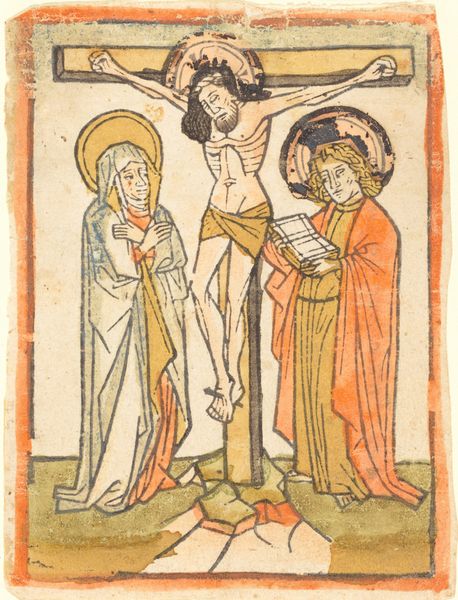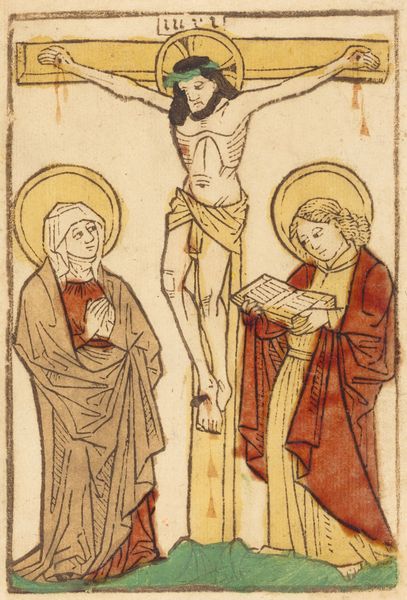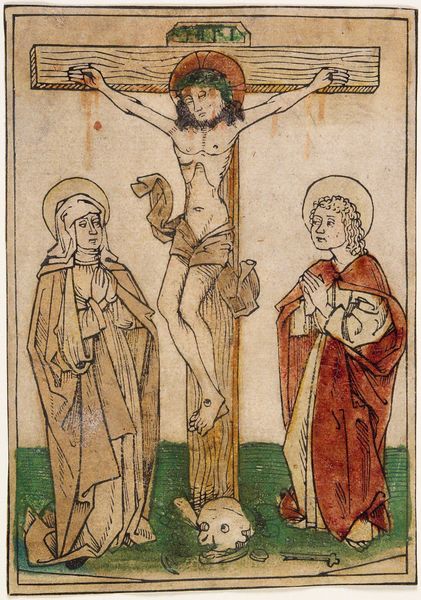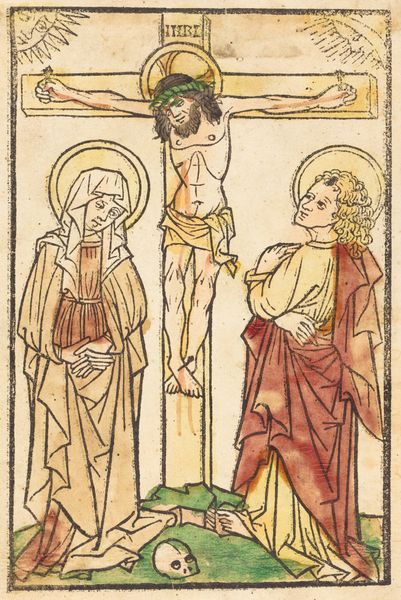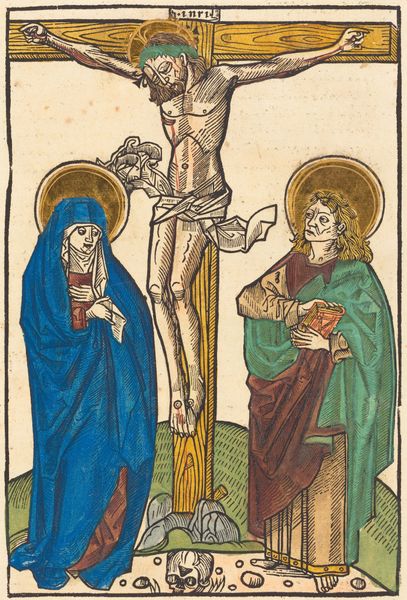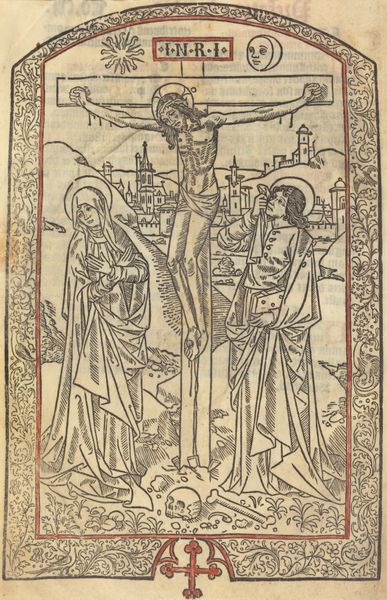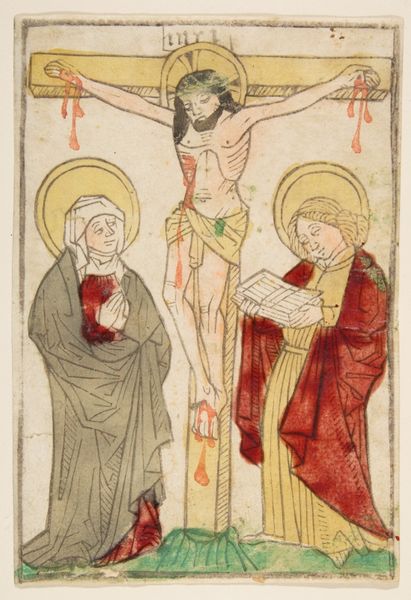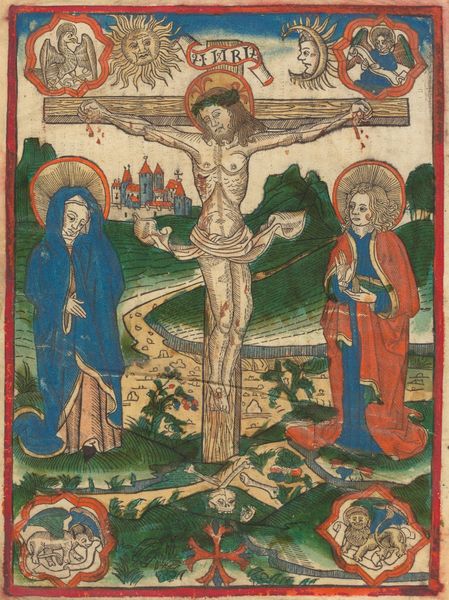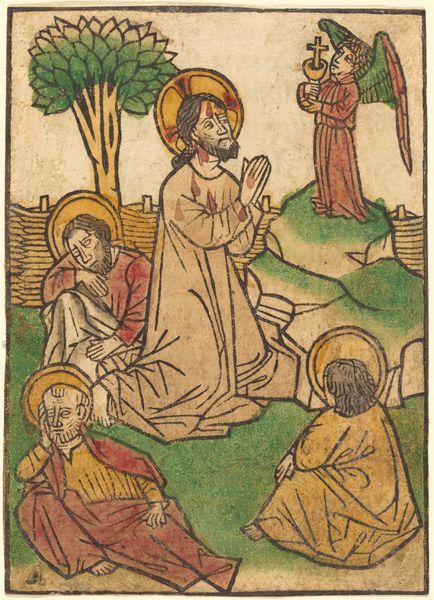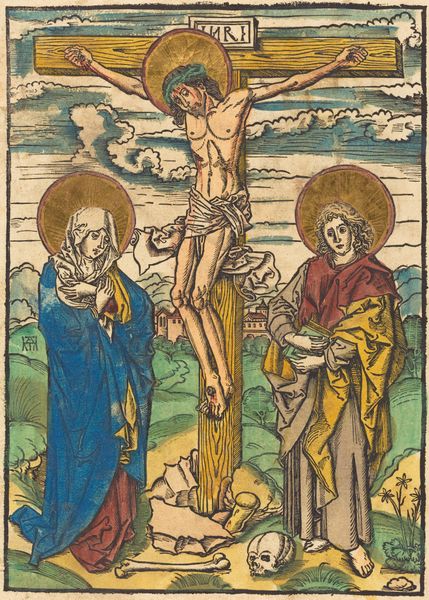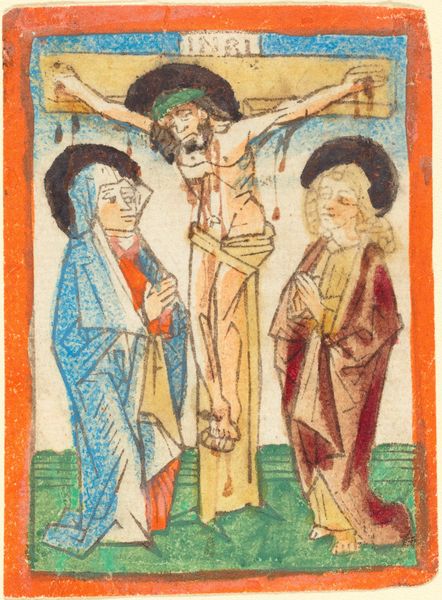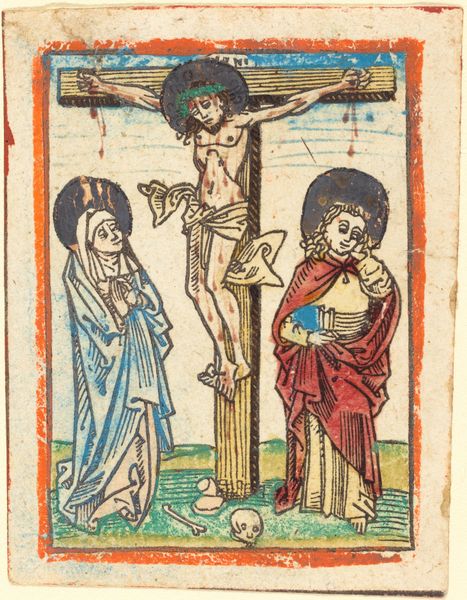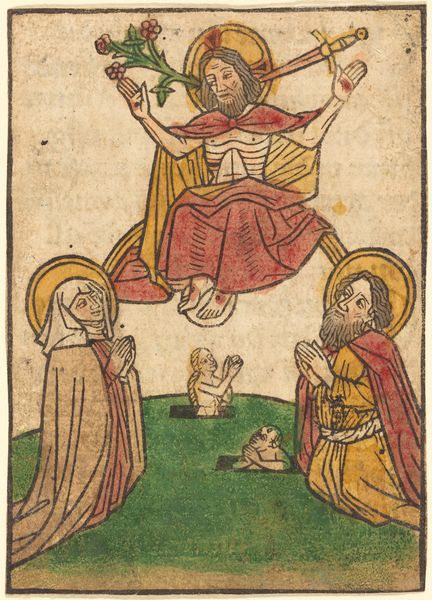
drawing, print, ink
#
drawing
#
medieval
#
narrative-art
# print
#
figuration
#
ink
#
history-painting
Dimensions: Overall: 11.1 x 8 cm (4 3/8 x 3 1/8 in.) overall (external frame dimensions): 59.7 x 44.5 cm (23 1/2 x 17 1/2 in.)
Copyright: National Gallery of Art: CC0 1.0
This woodcut, The Crucifixion, was made by Ludwig of Ulm sometime between 1390 and 1510. It depicts the death of Christ, a key event in Christian theology, rendered in a stark, graphic style typical of the late medieval period in Southern Germany. Images like this were not just devotional aids, but powerful tools in shaping religious thought. The focus on Christ's suffering, the blood, the grieving figures, all served to evoke a visceral emotional response from viewers. Religious institutions promoted these images to reinforce the importance of sacrifice and redemption, shaping the spiritual lives of the faithful. When interpreting an image like this, historians explore theological treatises, accounts of popular religious practices, and records of patronage to understand the social role that art played in the lives of people from the past. The meaning of art is contingent on social and institutional context.
Comments
No comments
Be the first to comment and join the conversation on the ultimate creative platform.
